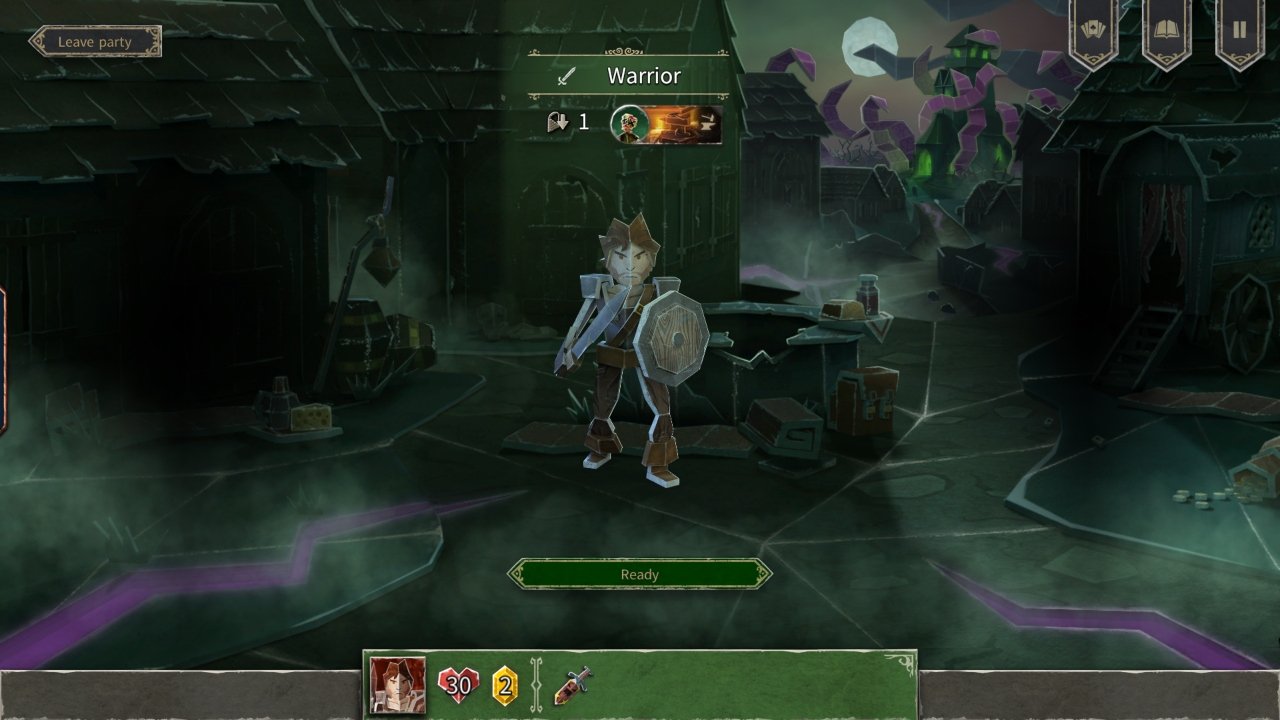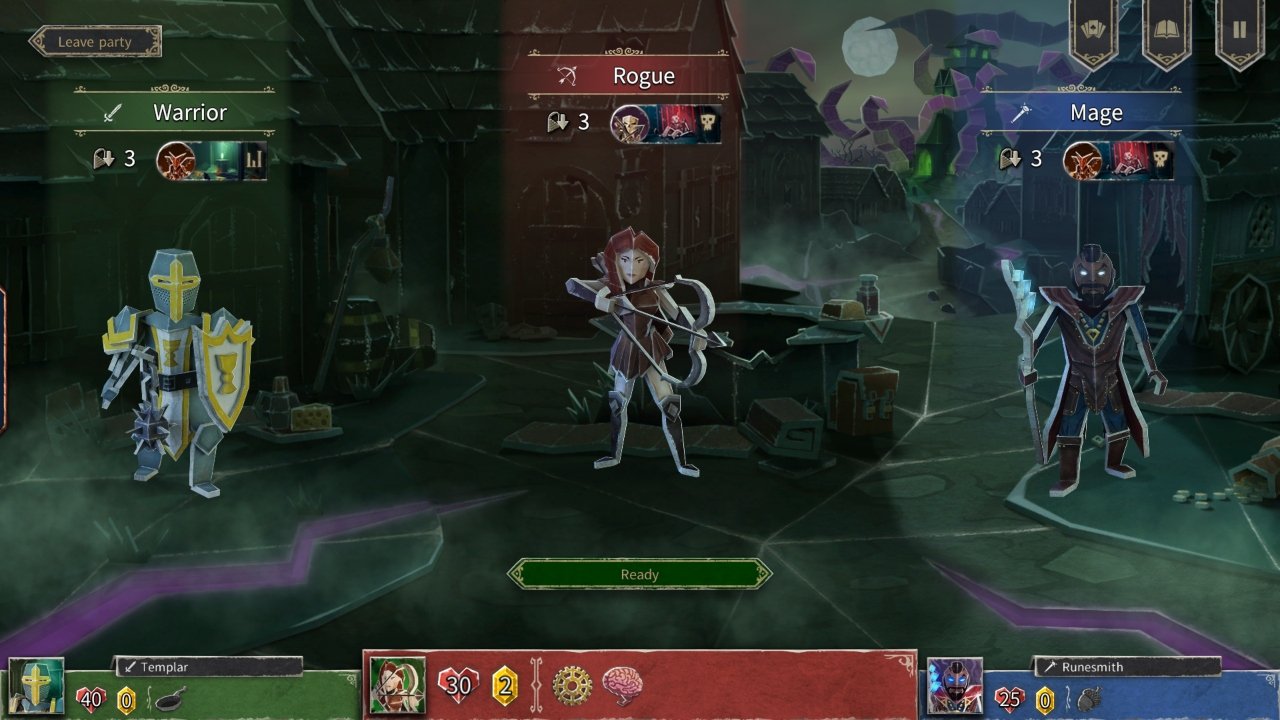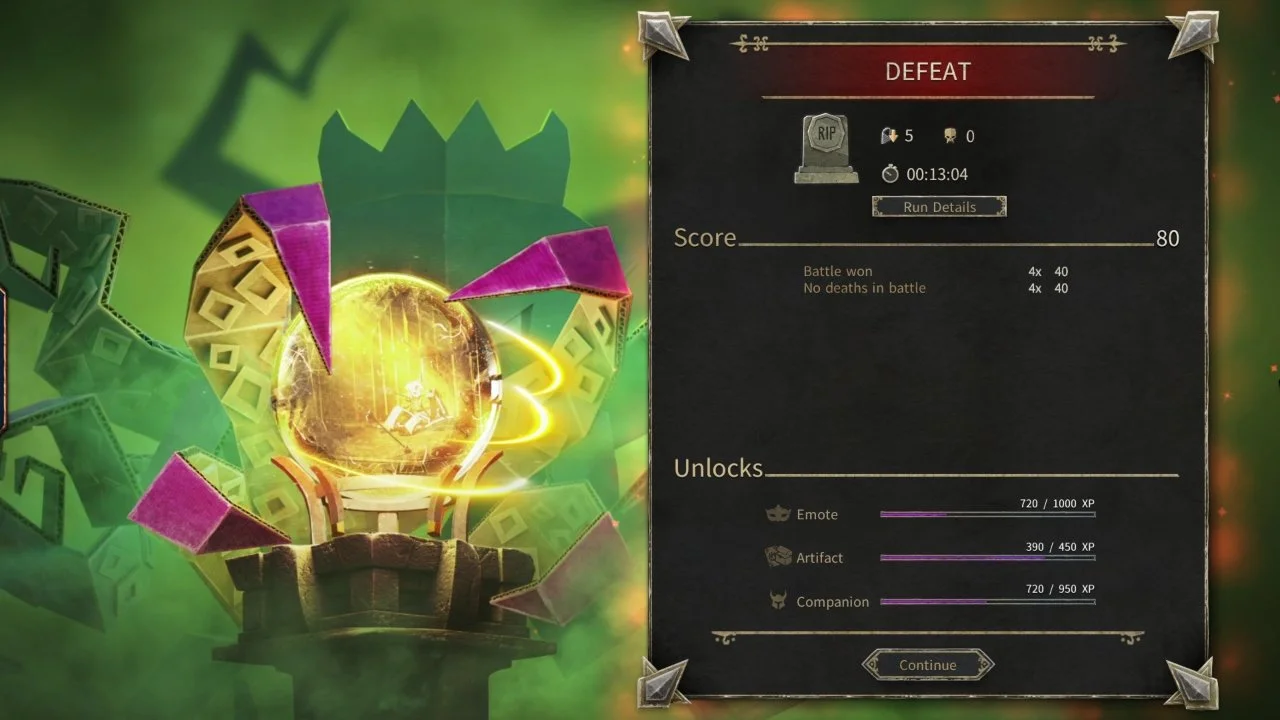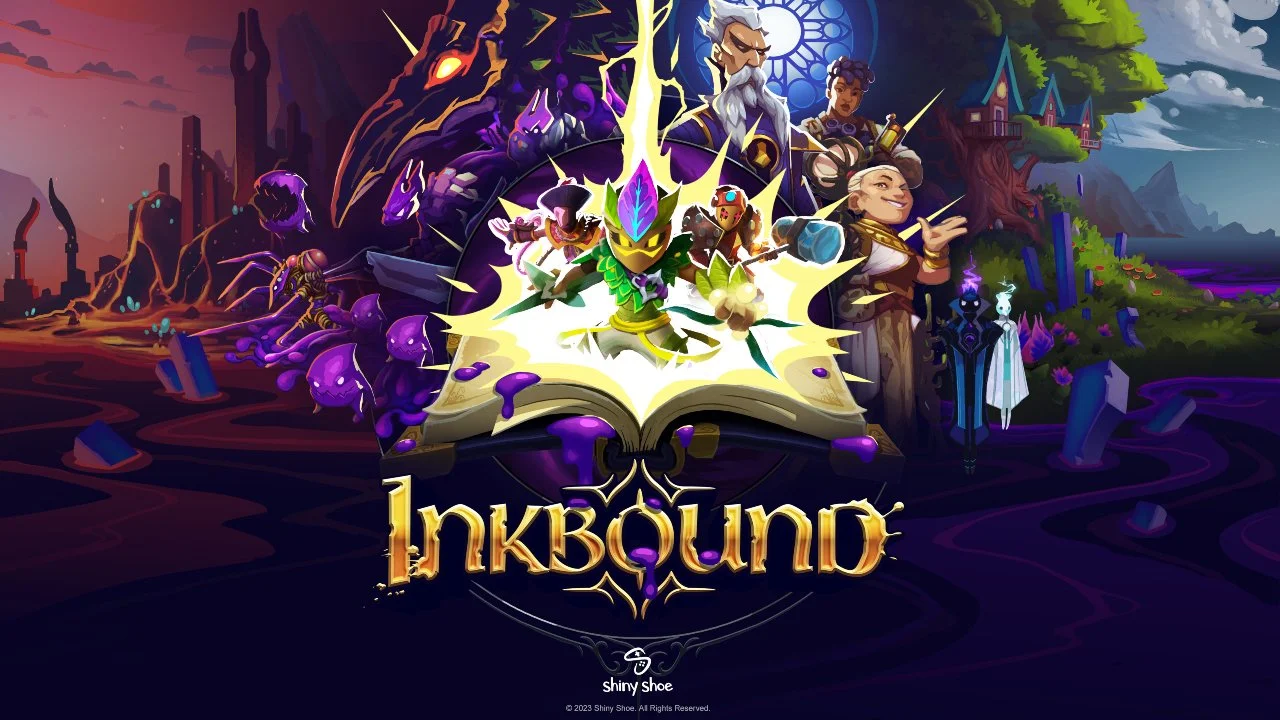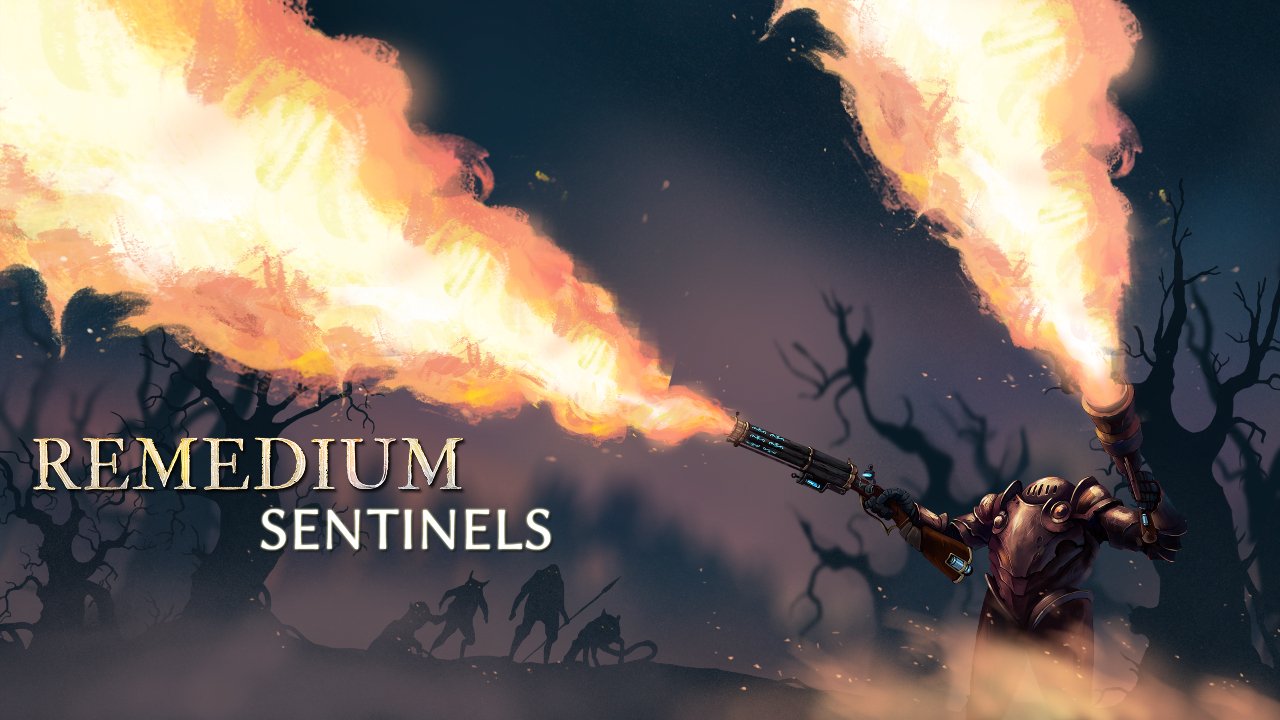PC Preview Code Provided by Thing Trunk
Indie developers Thing Trunk released their new roguelike RPG Hellcard into Early Access on Steam recently. Thing Trunk are the devs responsible for the Book of Demons, a dungeon-crawling hack-and-slash deck-builder that has received a generous number of very positive reviews on Steam for an indie dev's first entry. Hellcard takes place in the same world as Book of Demons and makes use of the same unique graphics, isometric ‘paper cutout’ characters, and enemies. However, where Book of Demons is a hack and slash, Hellcard is first and foremost a roguelike with deckbuilding mechanics.
Hellcard separates itself from the roguelike pack with its unique combat system, slices. Player characters are stationary within a circle and enemies in the area of their ‘slice’ will attack them first. Given the success of Book of Demons, and with Hellcard sharing a world, multiple design elements, graphics, and I believe a system, I was expecting some great things from Hellcard; while many of my expectations were met, there was a lot missing that the Early Access tag doesn’t make up for.
As with many indie roguelikes, the story doesn’t really exist for Hellcard outside of the world it exists in. You are a hero or a team of heroes adventuring through a stereotypical fantasy world to beat the big bad guy at the end of the dungeon or map. This isn’t really a bad thing, but so far, the story is largely just gotten from context clues from design and gameplay decisions. A lack of story isn’t a dealbreaker for a roguelike, but it is something nice to have, even if it's just told through item descriptions and so on, but as of yet Hellcard doesn’t have that.
Gameplay
When it comes to roguelikes, the gameplay is what makes the game a success or a failure, and to me, Hellcard is very much a mixed bag. I’m a big fan of roguelikes, especially deckbuilding ones, and Hellcard while fun for the most part has not managed to find that something special that makes every run that much more fun. Hellcard’s main claim to fame is its co-op dungeon delving feature. Players can team up with their friends to dive, go solo, or be joined by NPCs that replace the co-op option with an additional deck controlled by the player; but with a smaller hand size than a co-op deliver would have, as well as automatic upgrades rather than choosing your own path. I will say co-op mode is the true way to experience Hellcard and what I believe the game has been balanced for; on the flip side the single-player experience feels off, I don’t want to say badly designed because it isn’t, I feel like it has not been optimized properly.
For the game system itself, Hellcard is a fairly straightforward roguelike. At the start of each run, you choose your class type, warrior, archer, or mage. As you progress in the game you unlock artifacts and new subtypes, (ie: paladin for warrior) that let you more feasibly progress in your dungeon dive. At the start, it is very much impossible to get to the last boss until you unlock some new items, cards, and characters to start with or find on your dive.
Once a run starts your character will occupy a circle in the center of a level surrounded by enemies. You will draw five cards at the start of your turn from a deck that your character starts with; then in turn-based combat, you will play these cards using your energy resource. The player is able to see what action an enemy will take on their turn, and you must plan your actions accordingly, for example prioritizing killing enemies that will attack a character on their turn. At the end of combat, you are rewarded with new cards for your primary characters deck, cash, and sometimes an opportunity to recruit an NPC to your adventuring team randomly generated from the available class options that you have unlocked. These NPCs will take up a new slice in the combat circle for enemies to focus on, as well as come with their own deck of cards themed to their class, but they will also increase the number of enemies you face in a fight.
After you receive your rewards from combat you have the option to spend your cash before you choose what path you will follow for the next fight. Choosing your path is what decides what type of enemies you will face in the next room as well as what options you have to spend your cash on after the fight. Options on what to spend cash on include, artifacts, new cards, healing, getting rid of cards, and upgrading cards; but only in your primary character’s deck, you can’t affect NPCs decks or cards. NPC decks and cards just automatically upgrade as you delve deeper, but it is always the same way for their given class and not a lot. After each delve win or lose, you will gain exp for the class you delved with which will unlock new artifacts, cards, and subclasses for that class.
Audio and Visuals
The audio design for Hellcard I would say is understated, with a variety of sound effects and excellent sound design; but a lack of music. All rogue-likes need a good background track, it's not a huge thing, especially as the game’s still in early access, but that small addition to the ambiance isn’t there. Where Hellcard really makes its mark, is the paper cutout graphic design that makes up its world. It is an incredibly unique design style that Thing Trunk has created for the world of Book of Demons and Hellcard.
I will say that while the style is a draw I feel it works much better in the hack-and-slash movement of Book of Demons than it does in the relatively stationary Hellcard. When it comes to UI and visual design Hellcard does well for the most part. Everything is clear and easy to understand while maintaining the game's aesthetic, but much like the papercraft style of the game, some of the UI comes across as flat or plain. It’s not bad, but sometimes it is very basic and lacks that finishing touch; I do expect that to be corrected after Early Access, however.
Expectations
As with all rogue-likes, replayability is at an all-time high. Hellcard offers the unique opportunity of playing with friends in the co-op mode as well, which is an entirely new layer to its replayability. Aside from that, Hellcard offers a large number of upgrades for players to unlock to change and vary the experience as they play through the game. If anything, I would say that the unlock process is too slow at the moment and might drive away some players with how repetitive early levels can be in runs.
Quite frankly, there's a fair bit that I think Hellcard could do better before it’s out of early access. First off, my biggest issue is that unlocks should be going faster. New players should have more access to variation in builds and runs a lot quicker than is currently available. While I played, my runs were feeling repetitive and lacked new stuff just because of how slow I was unlocking new features. After that, a big issue is enemy variety as well as balance. So far there are not a lot of different enemies available, and to make it anywhere in a run you have to get really far down the unlock tree. So theoretically the game may be balanced for when players have a lot unlocked, but in that case, as I’ve said before, unlocks need to come faster. As Hellcard is in early access I expect a lot of my issues to be fixed as time goes on, but currently, I’m not really pumped about how the game plays.
Verdict
Hellcard is a unique take on the rogue-like experience, but so far feels as if it’s a rough yet promising spin-off of Book of Demons made quickly using the same engine and assets. I don’t think Hellcard is a bad game, but currently, unless you’re a fan of Thing Trunk and Book of Demons, I don’t think Hellcard is worth the $20 price tag for a game that is still very much in early access. If you enjoy taking part in the development process and shaping a game with your feedback for the developers Hellcard may very well be worth a look; personally, I’ll wait to dive back in until Hellcard is out of early access, but it does contain some great promise, and I can’t wait to see the finished and polished final product.
Hellcard is now available on PC via Steam Early Access.
